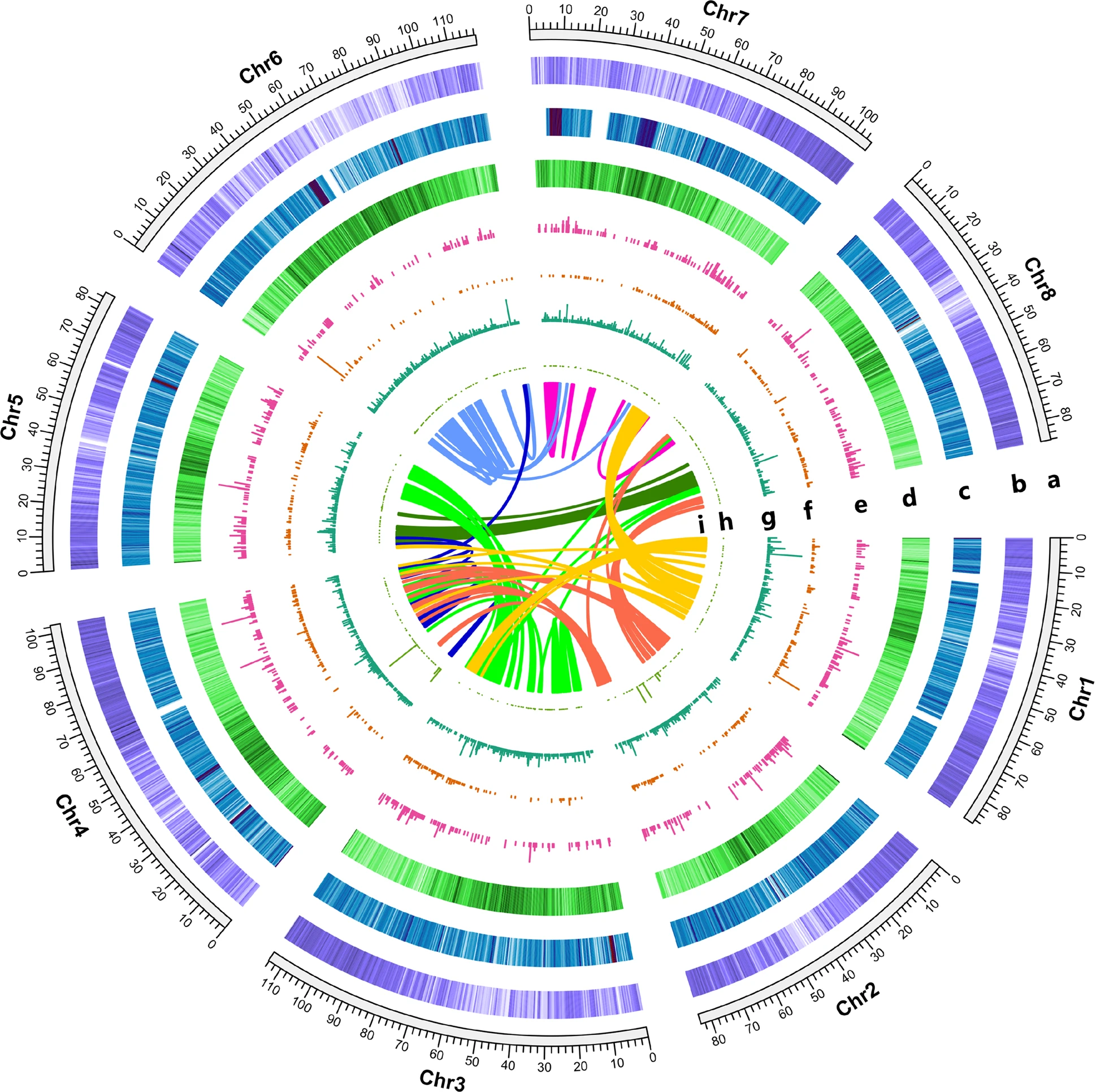 Alfalfa Gene Editing Database
Alfalfa Gene Editing Database
 Alfalfa Gene Editing Database
Alfalfa Gene Editing Database
Alfalfa (Medicago sativa L.) is one of the most important and widely cultivated forage crops. It is commonly used as a vegetable and medicinal herb because of its excellent nutritional quality and significant economic value. Based on Illumina, Nanopore and Hi-C data, researchers assembled a chromosome-scale assembly of Medicago sativa spp. caerulea (voucher PI464715), the direct diploid progenitor of autotetraploid alfalfa. The assembled genome comprises 793.2 Mb of genomic sequence and 47,202 annotated protein-coding genes. The contig N50 length is 3.86 Mb. This genome is almost twofold larger and contains more annotated protein-coding genes than that of its close relative, Medicago truncatula (420 Mb and 44,623 genes). The more expanded gene families compared with those in M. truncatula and the expansion of repetitive elements rather than whole-genome duplication (i.e., the two species share the ancestral Papilionoideae whole-genome duplication event) may have contributed to the large genome size of M. sativa spp. caerulea. Comparative and evolutionary analyses revealed that M. sativa spp. caerulea diverged from M. truncatula ~5.2 million years ago, and the chromosomal fissions and fusions detected between the two genomes occurred during the divergence of the two species. The near-complete and accurate diploid alfalfa reference genome obtained herein serves as an important complement to the recently assembled autotetraploid alfalfa genome and will provide valuable genomic resources for investigating the genomic architecture of autotetraploid alfalfa as well as for improving breeding strategies in alfalfa.
Choromsome number: 8
Estimated genome size: 793.2 Mb
Contig N50: 3.86 Mb
Protein-coding genes: 47,202

Fig. 1: Overview of the PI464715 genome assembly.
a Genomic positions (in Mb) of the eight chromosomes of PI464715.
b dGene density.
c Transposable element (TE) content.
d Guanine-cytosine (GC) content.
e miRNA density. f tRNA density.
g snRNA density.
h rRNA density.
i Interconnections of paralogs in the genome are represented with colored lines.
Reference:
You can use Gene ID (e.g. MsaG000010)